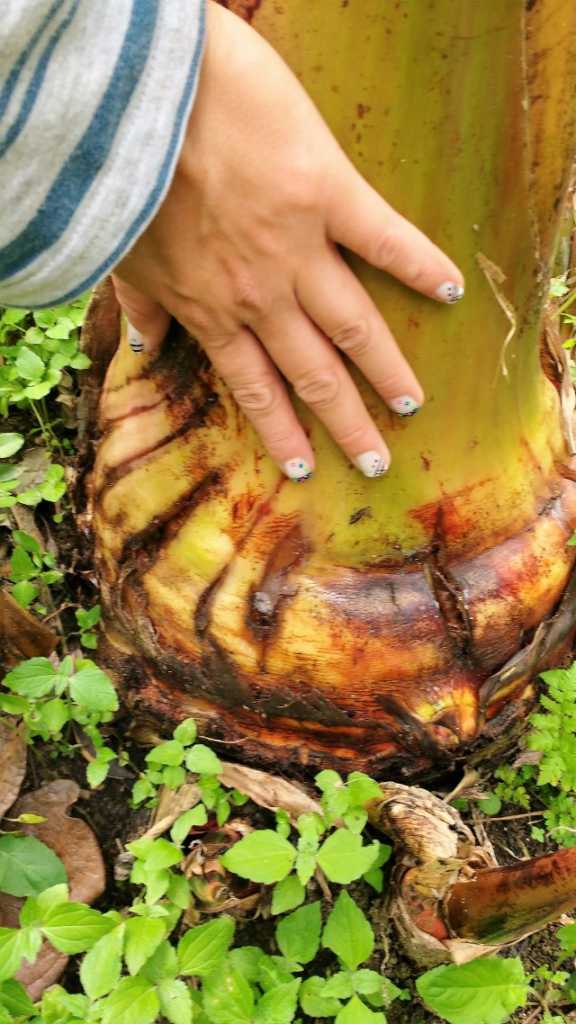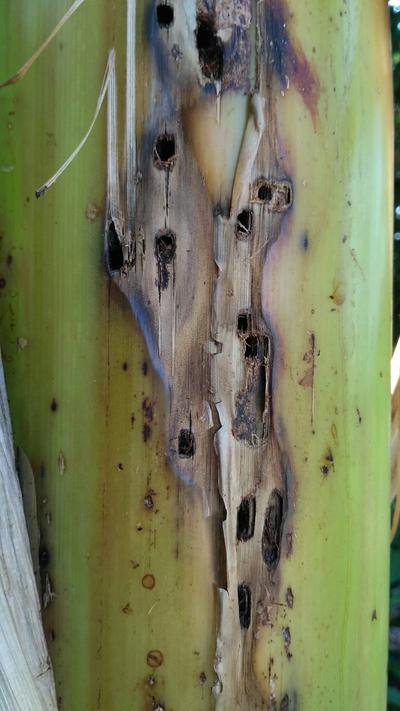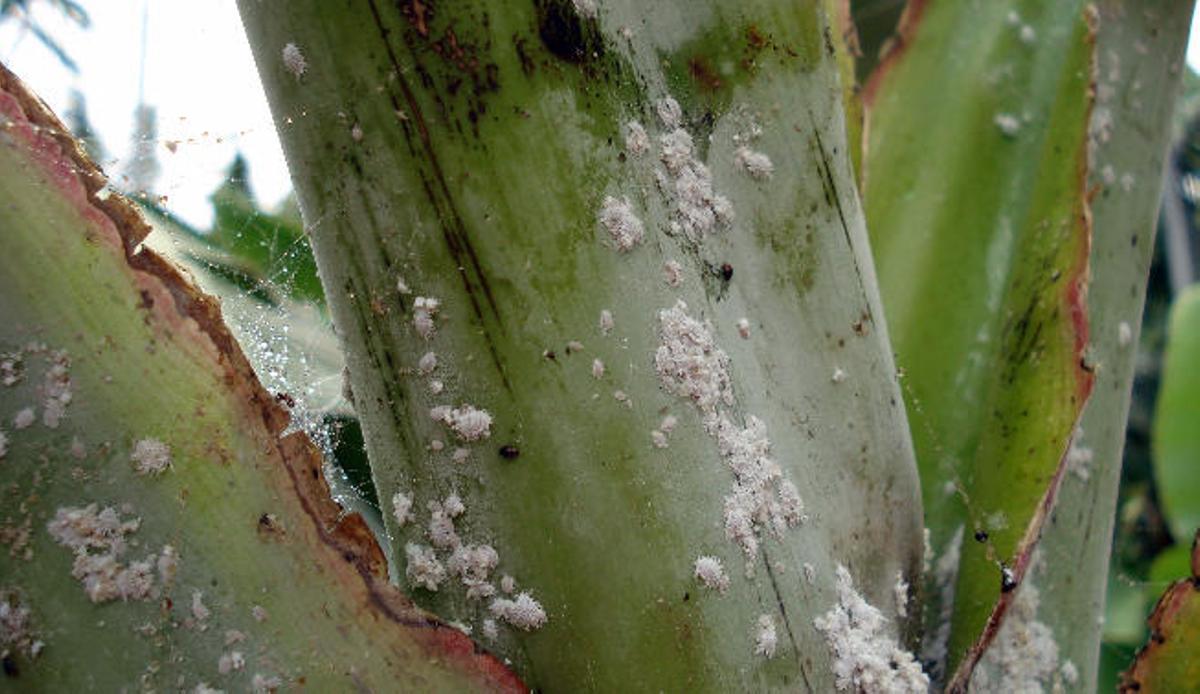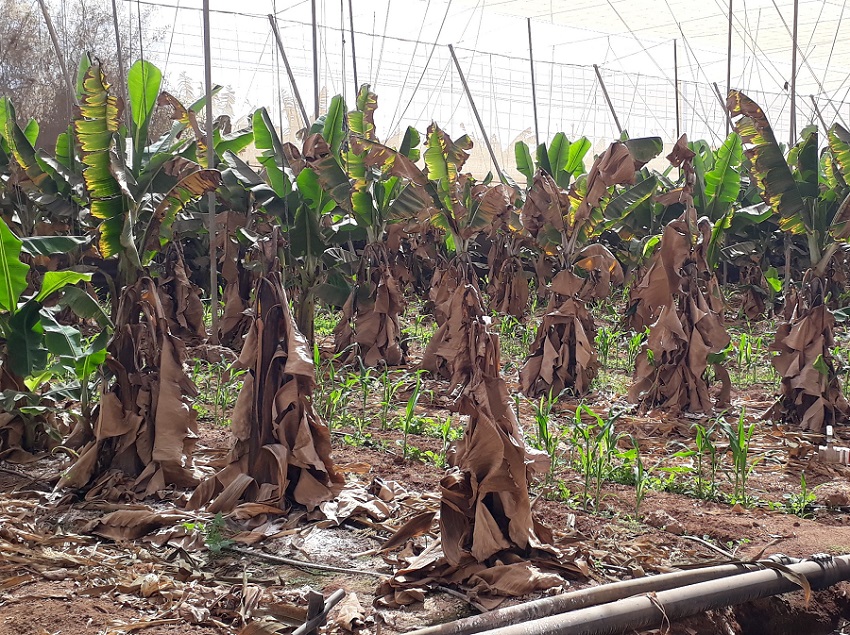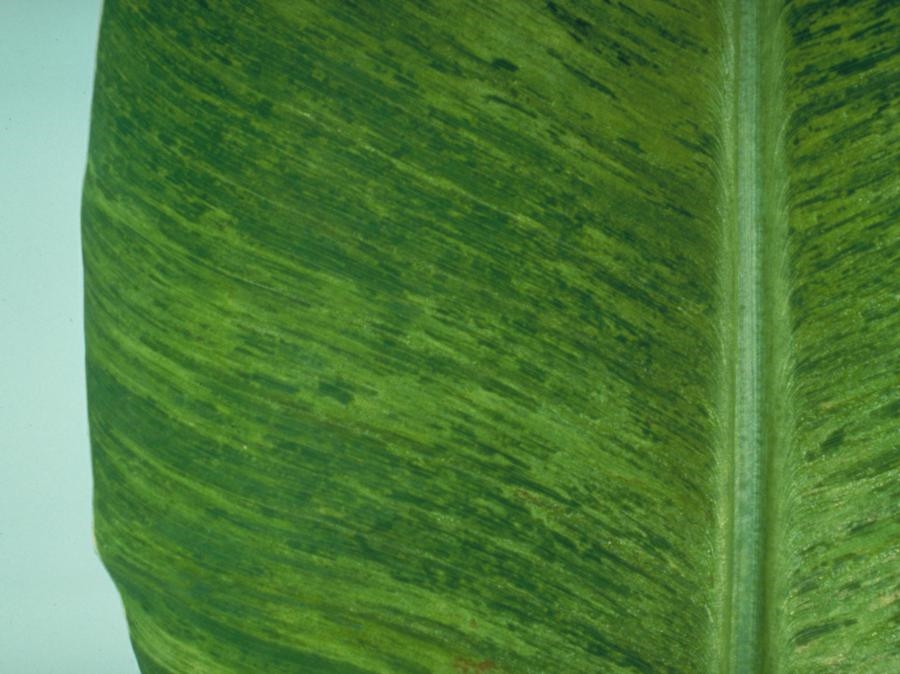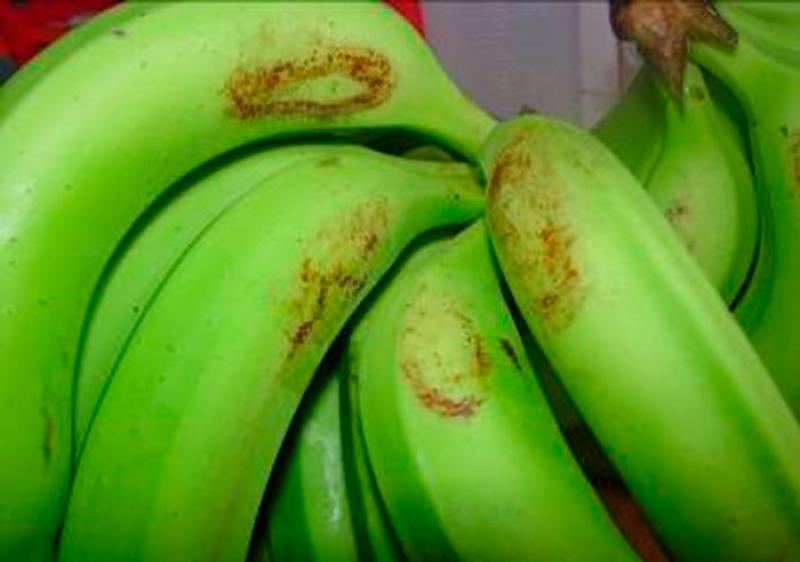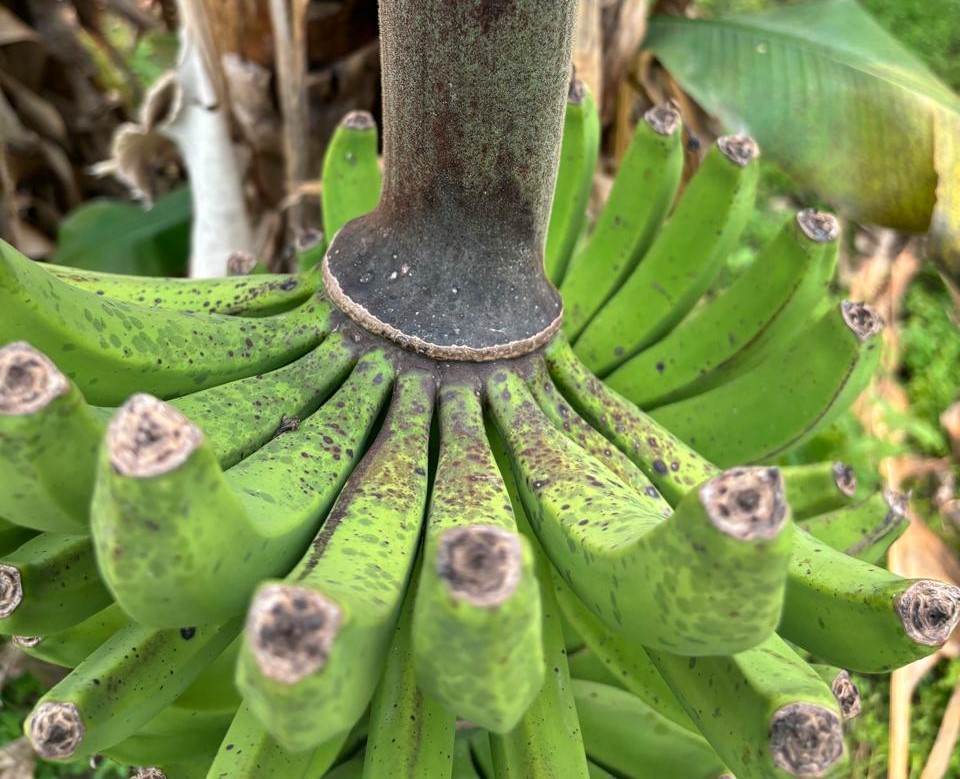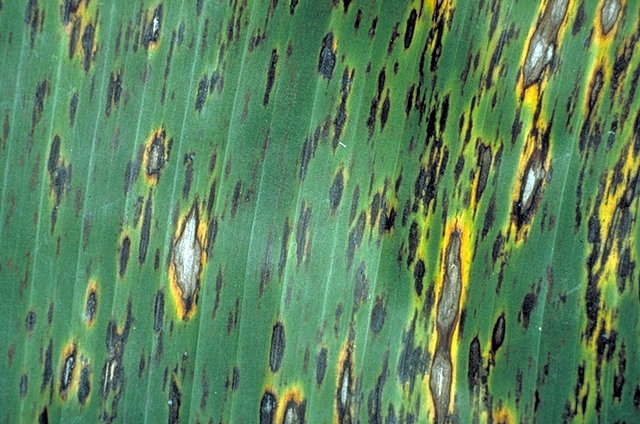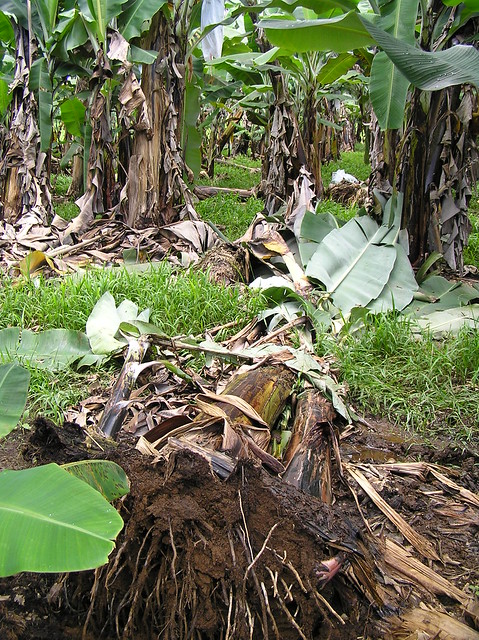
Pellets or scales or white louse
WHAT IT IS AND HOW TO ELIMINATE
Platanera
Pellets or scales or white louse
Aspidiotus nerii
Pathogen:
Insect
Type:
Risk to the plant:
HIGH
Escamas
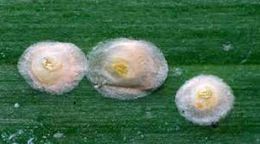
WHO CAUSES IT?
Aspidiotus nerii is a hemipteran insect of the Diaspididae family, known as the white scale louse. It is a phytophagous that feeds on the sap of various host plants, including the banana tree. It presents a hemimetabolous development, that is, it goes through three main phases: egg, nymph and adult. Adult females are circular and flattened in shape, with a whitish or yellowish waxy shell that serves as protection. The males, on the other hand, are winged and much less visible. Eggs are laid under the female's protective shield, where the nymphs emerge and begin to move in search of a suitable place to feed. These nymphs, also called "crawlers", are the most mobile phase of the insect, since when they attach to the plant, they remain in one place for the rest of their development. Its biological cycle can be completed in a few weeks under optimal conditions, favoring a rapid increase in populations and making it difficult to control.
SYMPTOMS
The infestation of Aspidiotus nerii in the banana tree generates a disease that affects the physiology of the plant, reducing its photosynthetic capacity and progressively weakening it. This damage is due to the suction of sap carried out by the nymphs and adults, which causes loss of vigor and deformation of leaves and fruits. Furthermore, the presence of the insect favors the development of sooty mold, a fungus that feeds on the sugary secretions produced by some sucking insects, further affecting the health of the crop.
- Presence of whitish or yellowish scales attached to the leaves, fruits and stems.
- Yellowing and progressive weakening of foliage.
- Reduction in plant growth and production.
- Appearance of sooty mold on the surface of leaves and fruits.
- Premature fall of affected leaves and fruits.
- Difficulty absorbing nutrients due to sap suction.


DEVELOPMENT CONDITIONS
Temperature:
20°C - 30°C
Humidity:
60% - 80%
HOW IS IT SPREAD?
Wind, plant contact, contaminated tools, infested plant material
HOW TO ELIMINATE IT?
Home treatments
Natural allies
Chemical treatments
RECOMMENDED PRODUCTS TO ELIMINATE THE PEST
REPELLENT PLANTS
-
RECOMMENDATIONS
- Examine your plants regularly, especially the stems and branches.
- Clean affected areas with a soft brush or damp cloth.
- Isolate any plants you buy or are given as a gift before joining them with others.
- Use a mixture of potassium soap and water to spray the plant.
- Apply neem oil every 7-10 days as a natural treatment.
- Do not abuse fertilizers, since rapid growth attracts pests.
- If there are many scales, prune the most damaged parts and throw them in the trash.









